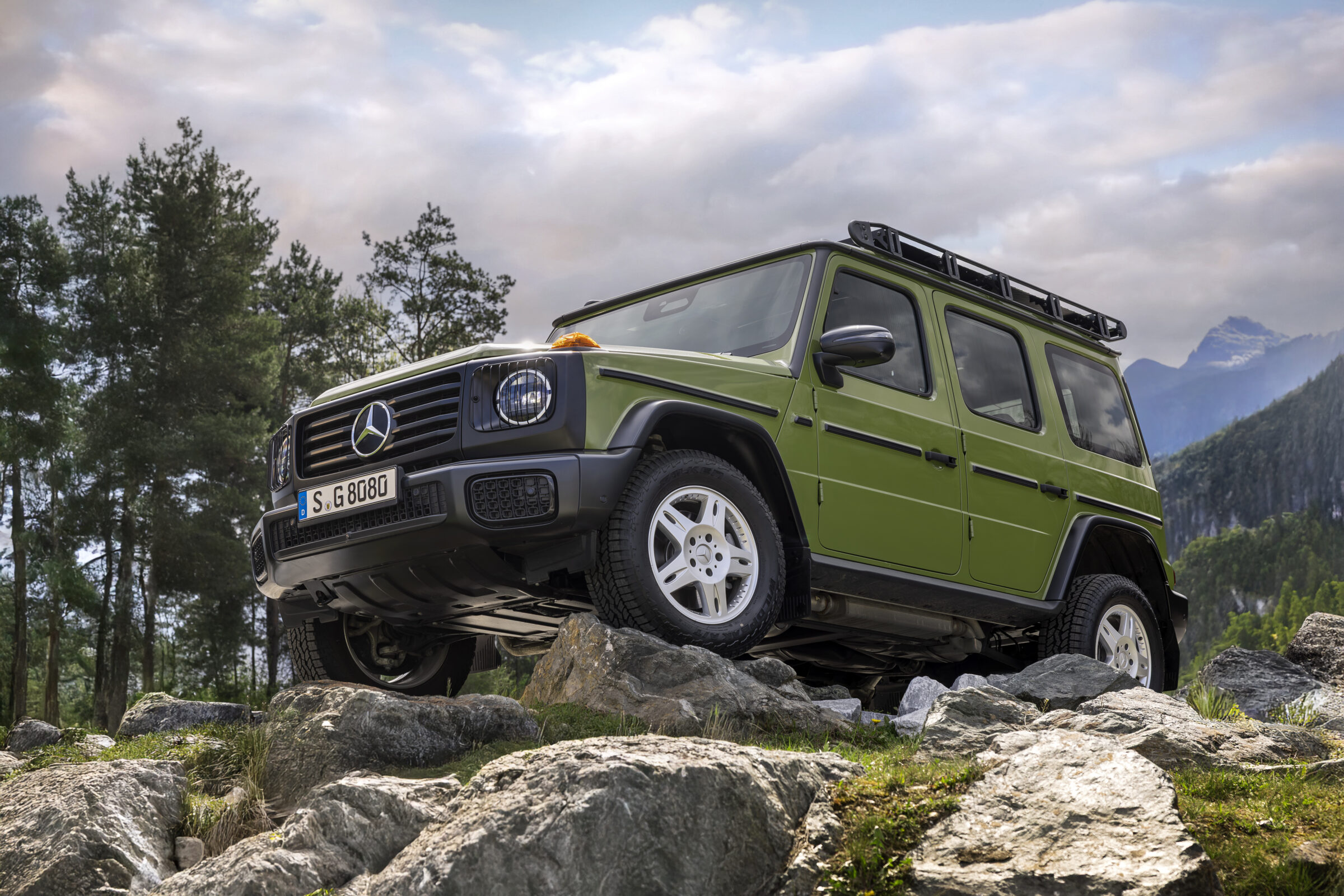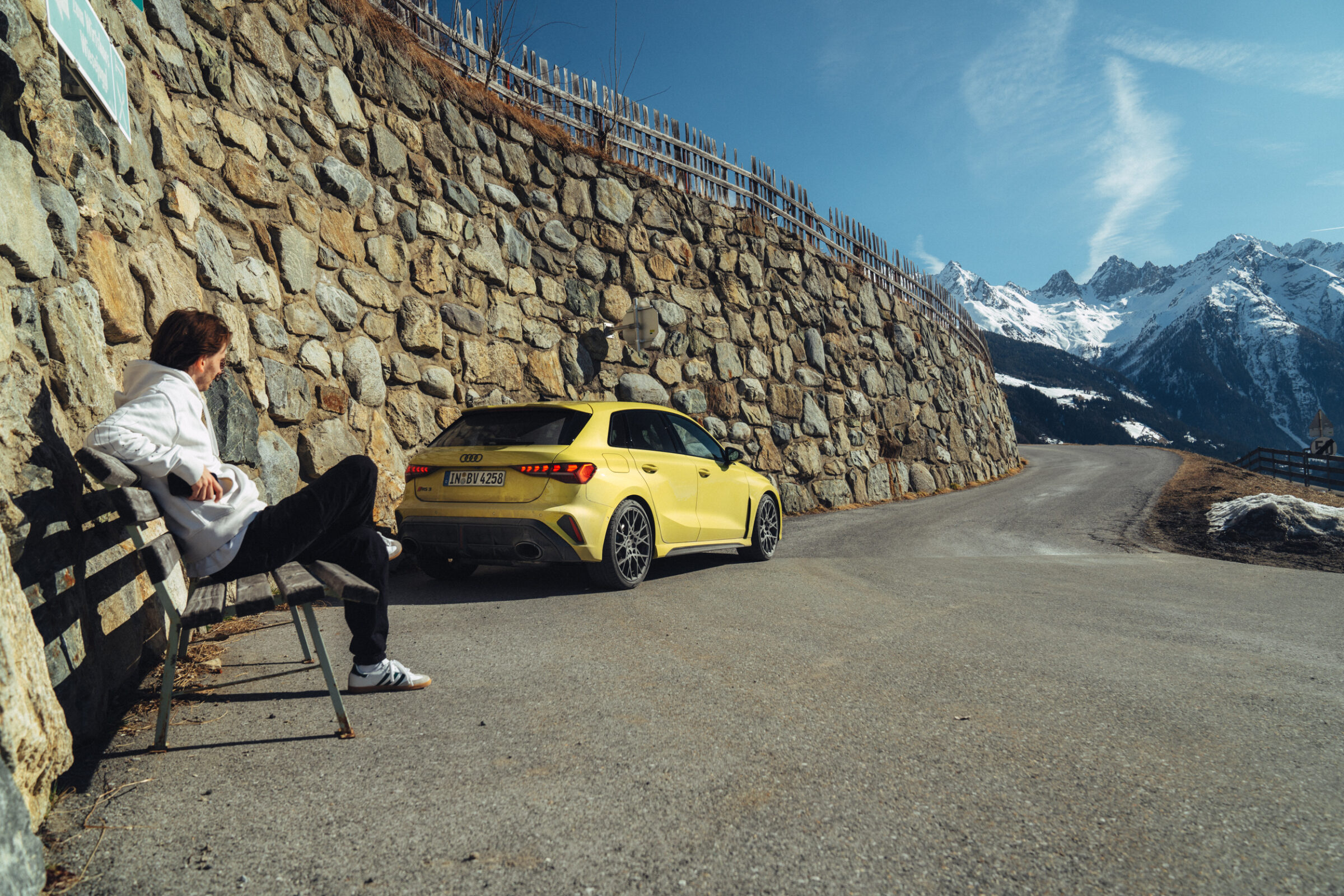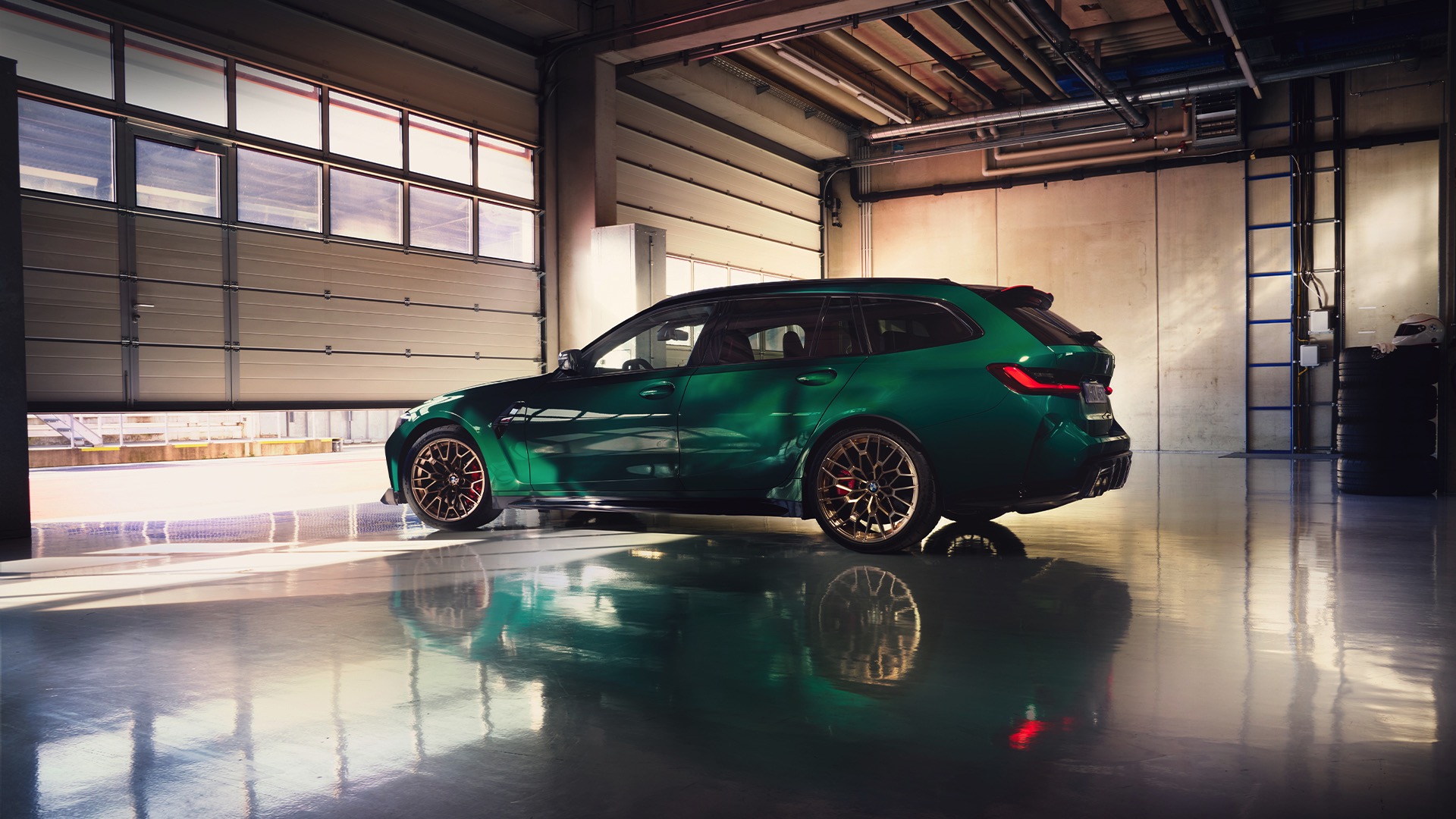40 Years of Fiat Panda
At the end of the 1970s, Fiat began to develop a modern successor to the 126. The concept with rear engine was now considered antiquated. For this reason, at the request of the then Fiat boss Carlo de Benedetti, a new platform with an engine in front of the driven front axle was created. For the first time an external company was approached for the design, in this case that of Giorgio Giugiaro, who together with Aldo Mantovani drew a smooth and angular car within 15 days during a study trip to Porto Cervo in the summer of 1976. The exterior design and the spartan interior with tubular steel frame seats kept production costs low, which also resulted in a low sales price. Giugiaro was inspired by folding dining room chairs and designed the trunk to accomodate two 50-liter wine canisters. When the finished prototypes were to be shown at Fiat on 7 August, Giugiaro and Mantovani learned that de Benedetti had resigned in the meantime. Nevertheless, Fiat took over one of the different versions offered and initiated the series development under the project code ‘Progetto 141’.
Fiat itself affectionately called the result ‘household appliance on wheels’, but in German-speaking markets soon adopted the term ‘great little box’ for advertising. During the first public tests in the Novegro Park in Milan the car was still called ‘Rustica’, but this was mostly judged negative, while the car itself was very popular. After tough negotiations with representatives of the trade unions regarding the production site for the new model had to be fought out, it was finally shown to the press in late 1979. At the Geneva Motor Show in 1980 and shortly afterwards at the dealerships, the model was simply called ‘Panda’. This name is officially derived from the Italian ‘Empanda’, a Roman goddess and patron saint of travellers. Shortly after the presentation, WWF raised concerns about the designation, but these were abandoned after Fiat made a major donation to some WWF projects. In the first two months after the Geneva Motor Show, more than 70,000 orders for the small car were received from all over the world.
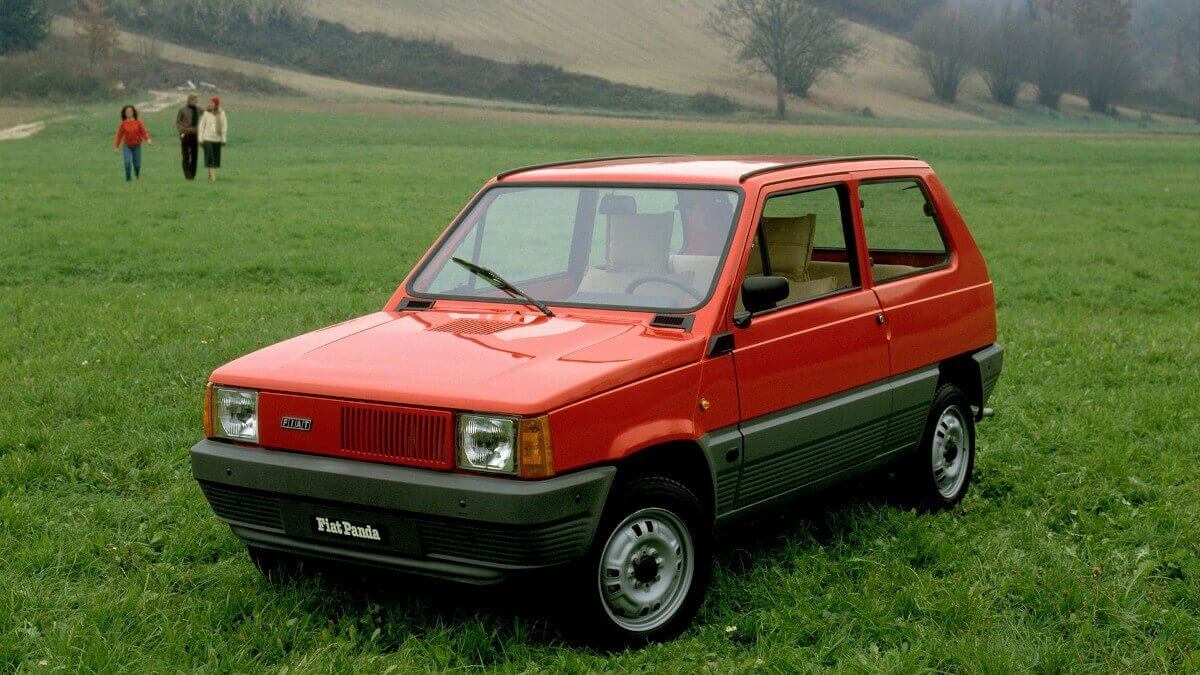

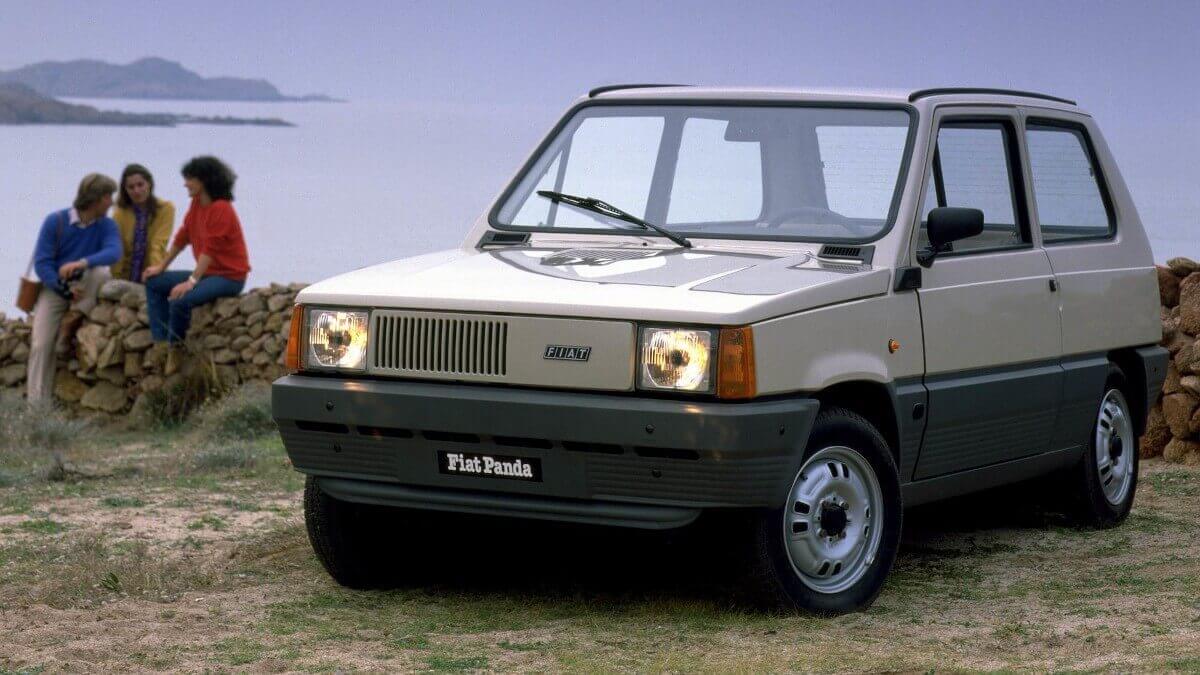





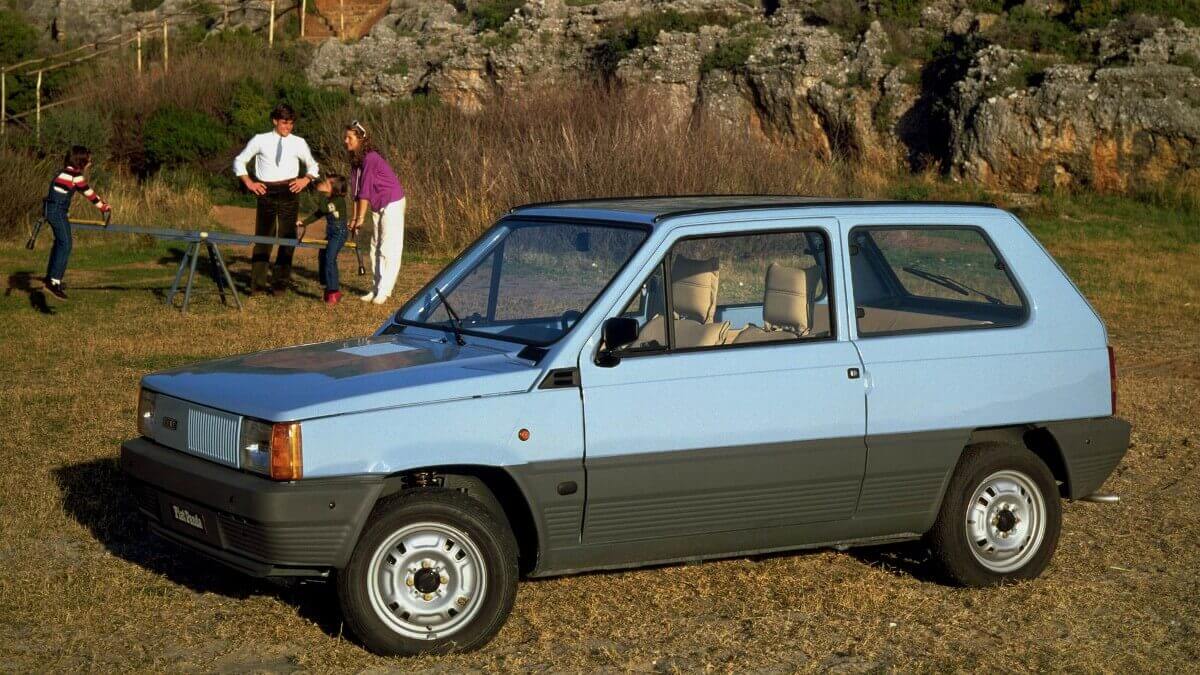

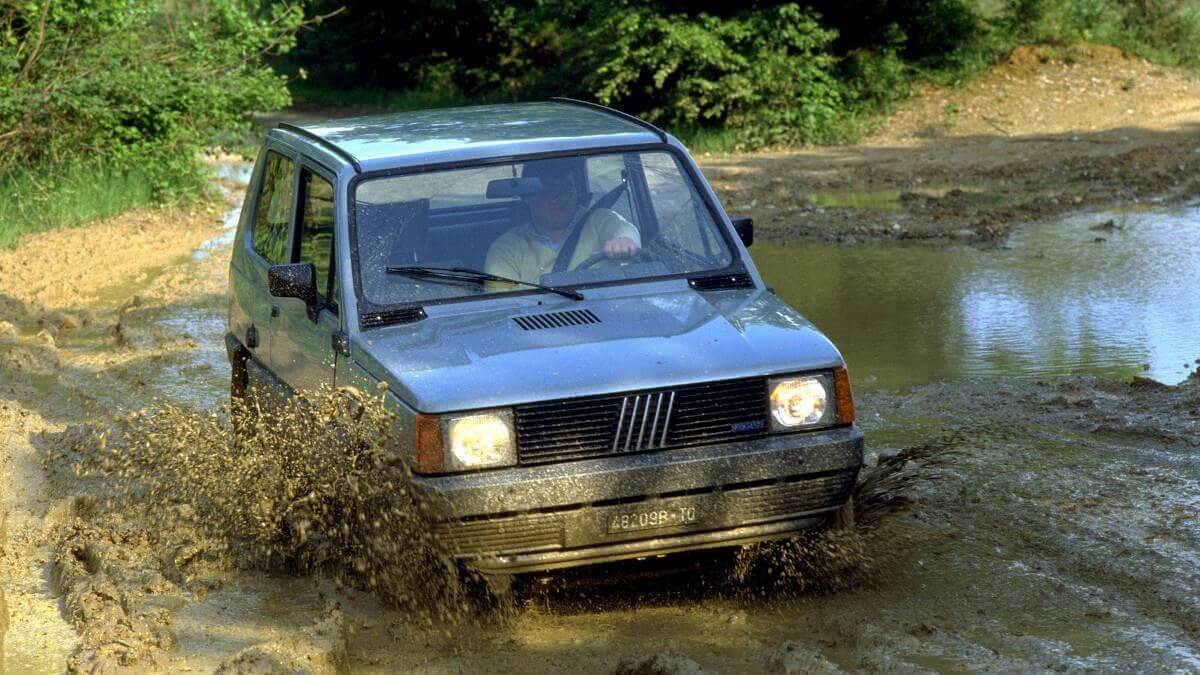

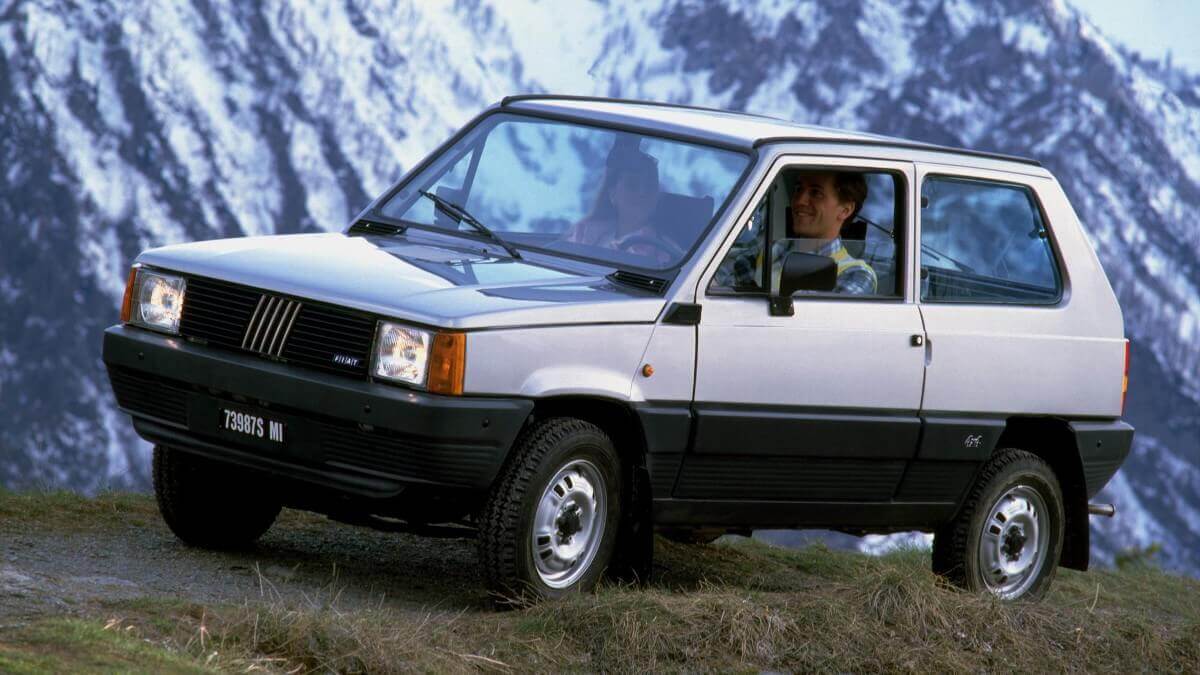







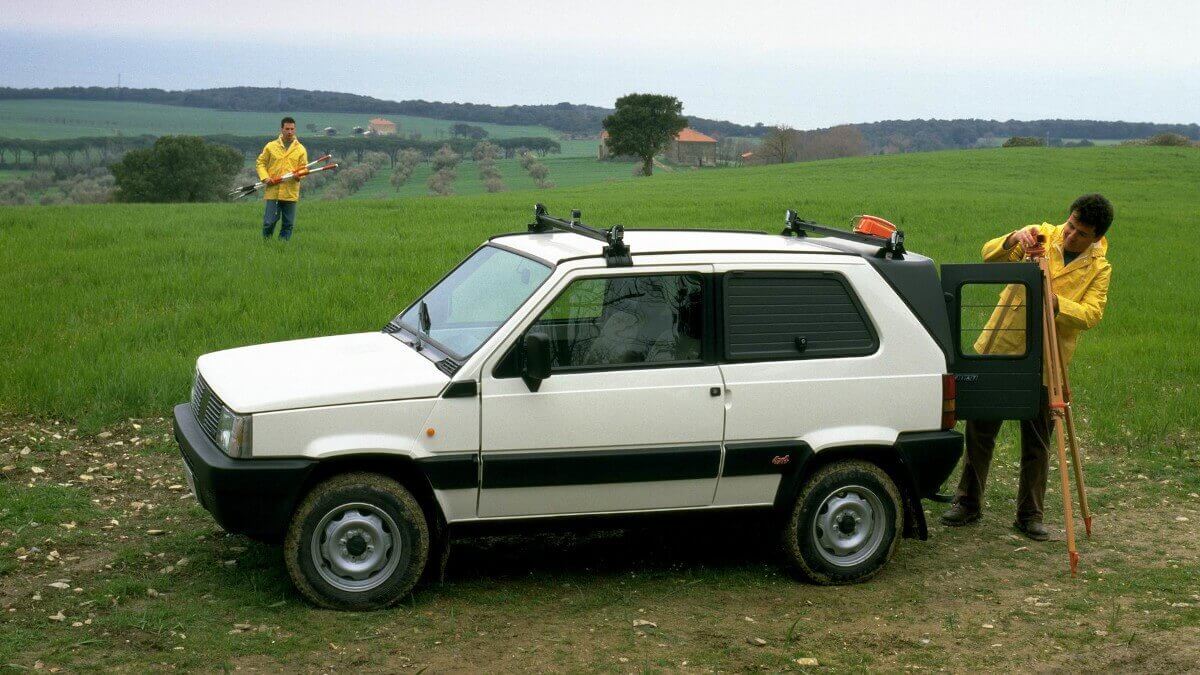



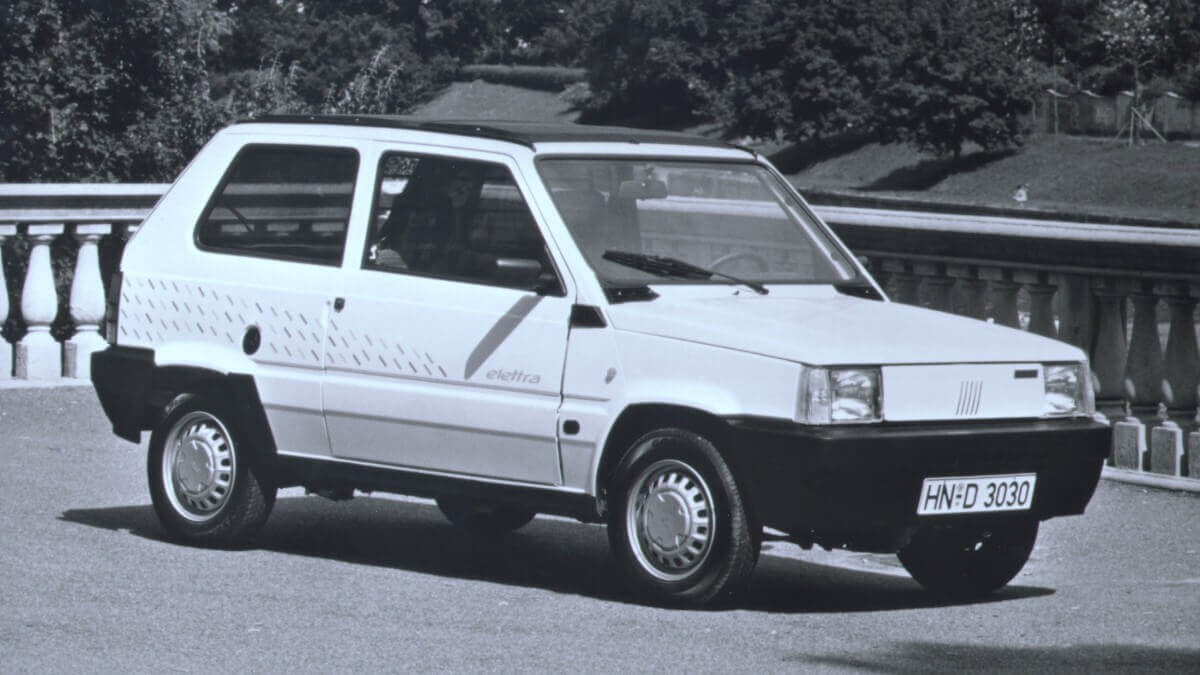

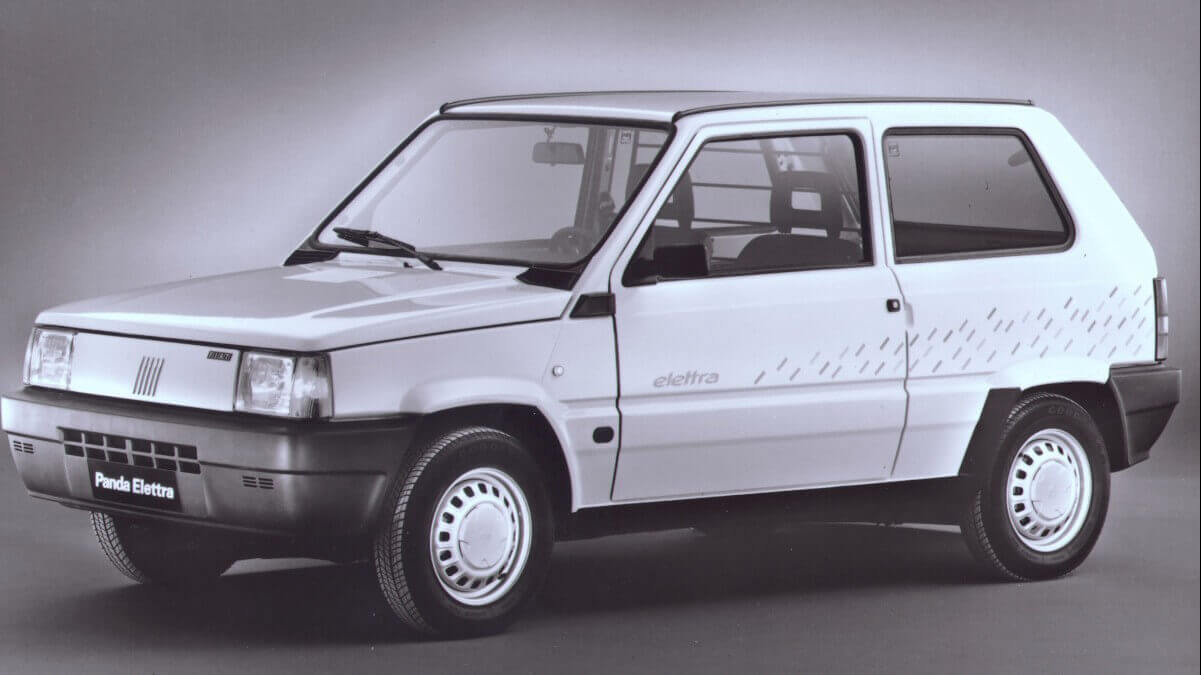

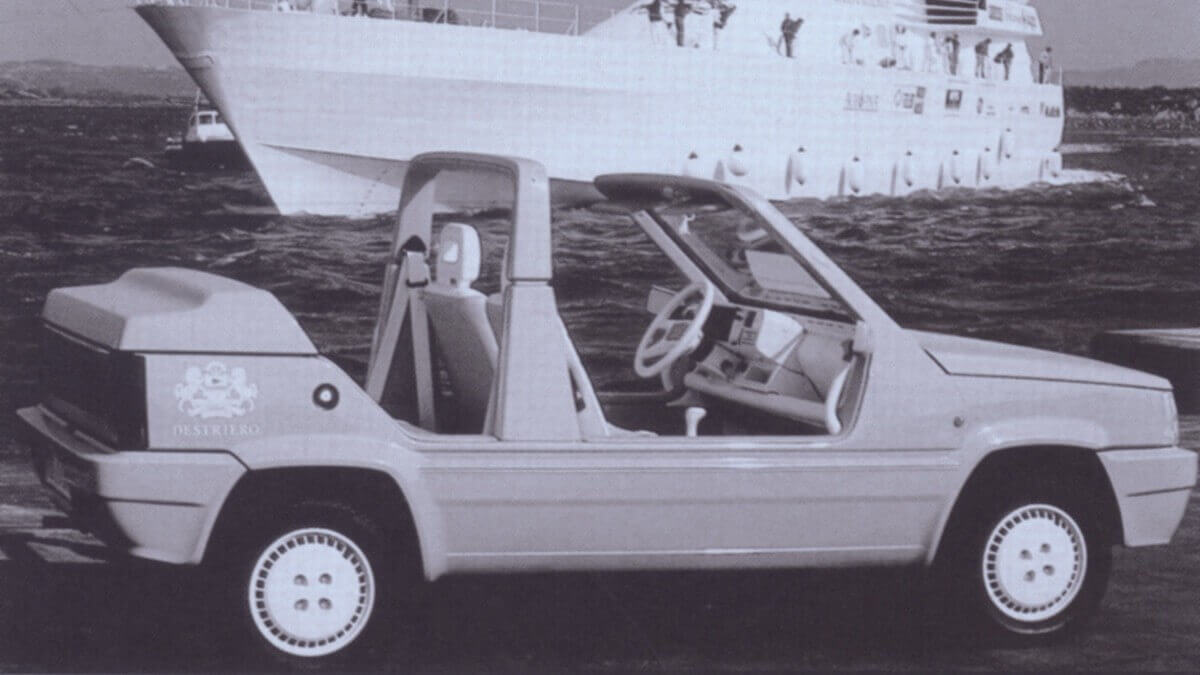

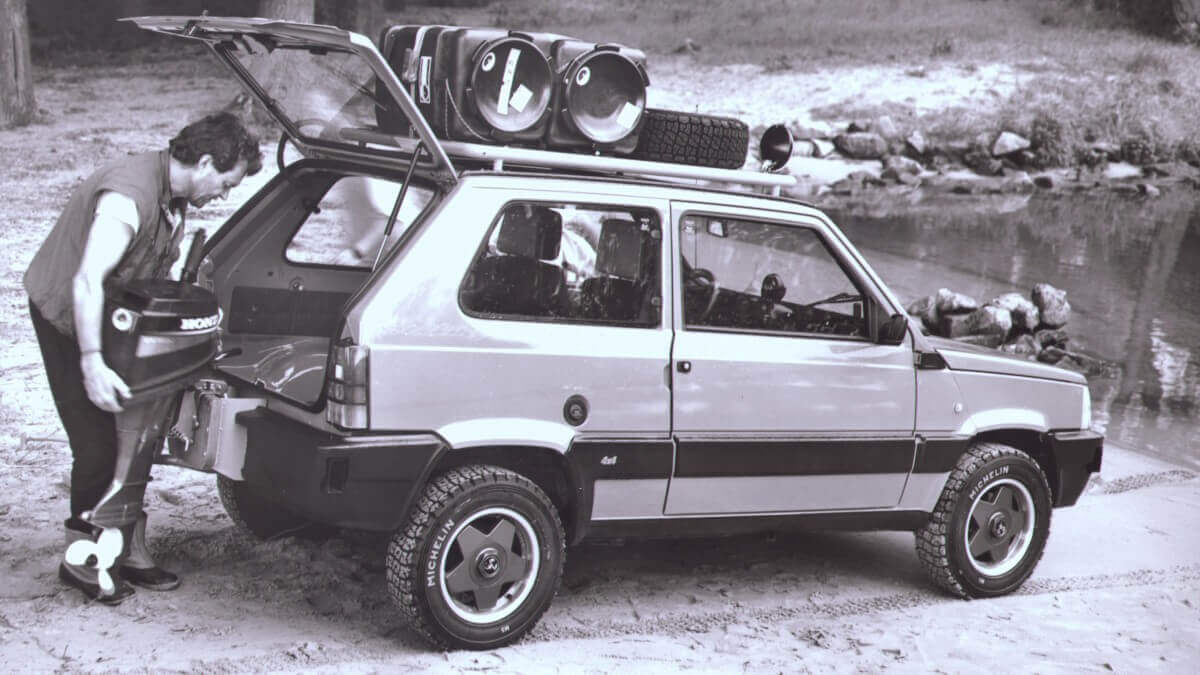







Interestingly enough, the first examples already showed from the front which engine was installed. Fiat offered either a parallel twin two-cylinder engine with air cooling and 30 hp from 650 cc or a water-cooled four-cylinder with 45 hp from 903 cc. In the entry-level version, the ventilation slots in the radiator grille were on the left-hand side of the vehicle, whereas in the water-cooled version they were on the right. The Panda 34 with 34 hp from 843 cc followed in 1982 for the export markets of Belgium, the Netherlands, France and Germany. In addition, there was now the 45 Super with a new black plastic radiator grille, which was also optionally available with a five-speed gearbox. In contrast to many earlier designs, the Panda had a monocoque construction with side panels welded to the roof throughout, which also automatically created a rain gutter in the upper are along the sealed weld seam. On request there was a fabric folding top available for a little open-air feeling. Meanwhile, special paint on the side skirts and bumpers ensured that not every parking bump could be easily seen from afar.
From June 1983 Fiat extended its range to include the Panda 4×4, for which a separate 968 cc four-cylinder engine with 48 hp was adapted from the Autobianchi A112 to the Panda. More important, however, was the four-wheel drive system from Steyr-Puch, which could be switched on or off, and a slight raising of the chassis. Such the ‘great little box’ mutated into a small mountain goat. In November 1984 the equipment lines were renamed to L, CL and S, whereby the new plastic radiator grille was adopted for all variants. However, it took until the beginning of 1986 before the Panda officially received a major facelift, as a result of which many previous components and spare parts no longer fitted. The biggest change to the ‘141A’, as the car was now internally called, was the change in the engine range. The two-cylinder power unit and the 34 hp engine (843 cc) were replaced by a water-cooled four-cylinder engine with 34 hp from 769 cc and the other two units from the Panda 45 and Panda 4×4 by a four-cylinder power unit with 45 hp from 999 cc (50 hp in the 4×4). They came from the new FIRE (Fully Integrated Robotized Engine) engine generation, which was mainly processed and assembled by robots. In addition, apart from the 4×4, the Panda now had a curved rear rigid axle with coil springs instead of the previous rigid axle with leaf springs. The rear side parts received a redesign in the lower area including slightly flared wheel arches and the doors dispensed the small quarter windows.
Only a few months after the facelift the Panda Diesel appeared with a 1.3-liter diesel engine from the Fiat Uno, which was reduced in power to 37 hp. There was also the Van version with closed rear side windows and a special body part instead of the normal tailgate, which enlarged the trunk a bit. In 1990, the Panda Elettra supplemented the model range with a 19 hp electric motor. Two years later, the output rose to 24 hp. The batteries were placed where the rear seats would normally be, while at the front, instead of the radiator grille, there was a panel painted in body color with the five diagonal bars of the Fiat logo of the time. The limited space available in the car, the short range of a maximum of just 70 kilometers (43.5 miles) and the price of almost three times that of the entry-level Panda Young reduced the spread of this electric car from the outset. Another small facelift followed in 1991 with a further modified radiator grille (wider plastic surround, smaller logo) and the introduction of the optional Selecta CVT gearbox based on the principles known from DAF with push link belt and magnetic powder clutch. Various special models kept the Panda as attractive as the low sales price. Due to new exhaust and safety regulations, Fiat finally withdrew it from the European market in 1996 and from then offered it only in Italy and a few non-European countries. After a total of 23 years, production of the Panda finally ended in May 2003. From 1980 to 1986 the Seat Panda was available in Spain as a licensed copy, which after an extensive facelift continued to be produced and exported as the Seat Marbella unti 1998. At Fiat the second model generation of the Panda followed in 2003, which was replaced by generation three in 2011. Approximately 4.5 million units of the original model were sold.
Images: Fiat


